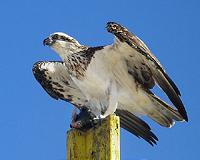 |
Edwardsville IL (SPX) Jul 26, 2010 Sometimes divers, to their own painful dismay, do belly flops. But did you ever see a frog belly flop? That's just what primitive living frogs do, according to a new study by Dr. Richard Essner, from Southern Illinois University Edwardsville in the US, and colleagues, looking at the evolution of frog jumping and landing. They found that frogs became proficient at jumping before they perfected landing. This evolutionary split, characterized by an inability to rapidly rotate the limbs forward during flight in order to land front legs first, might also explain why primitive frogs' back legs are out-of-phase with one another when they swim. Essner's work is published in Springer's journal Naturwissenschaften.Prior to this research, it had generally been assumed that all frogs jumped in a similar manner by rapidly extending their back legs during the propulsive phase and rotating the limbs forward during flight so that they could land front legs first. However, no studies had looked at the jumping behavior of the most primitive living frogs of the family Leiopelmatidae, which uniquely among frogs use a trot-like rather than a frog-kick swimming gait. Essner and team compared the jumping behavior of leiopelmatids with that of more advanced frogs. They analyzed video footage from 5 species - 3 primitive (Ascaphus montanus, Leiopelma pakeka, and L. hochstetteri) and 2 advanced (Bombina orientalis and Lithobates pipiens). They found that although launch movements were similar among the species, primitive frogs maintained extended back legs throughout their flight and landing phases and did not land on their front legs. These belly flop landings limited their ability to jump again quickly. According to Essner, this unique behavior of leiopelmatids shows that the evolution of jumping in frogs was a two-step process with symmetrical back leg extension jumping appearing first and mid-flight back leg recovery and landing on forelimbs appearing later. The frogs' inability to rapidly cycle the limbs may also provide a functional explanation for the absence of synchronous swimming in leiopelmatids. It is also plausible that the reason these primitive frogs have unusual anatomical features such as large, shield-shaped pelvic cartilage and abdominal ribs is to prevent damage to their internal soft tissues and organs during uncontrolled landing.The authors conclude: "The simple shift to early hind limb recovery may have been a key feature in the evolutionary history of frogs, facilitating controlled terrestrial landings and enabling rapid repetition of jumping and swimming cycles. These changes may have offered advantages for longer distance locomotion, better landing postures and improved predator avoidance and foraging."
Share This Article With Planet Earth
Related Links Southern Illinois University Darwin Today At TerraDaily.com
 High-Resolution Imaging Expands Vision Research Of Live Birds Of Prey
High-Resolution Imaging Expands Vision Research Of Live Birds Of PreyRockville MD (SPX) Jul 23, 2010 Bird observatories all over the world may benefit from a newly designed high-resolution imaging system used to study the retinal structure of live birds of prey. In a recently published Investigative Ophthalmology and Visual Science article, researchers reveal unprecedented three-dimensional information about the retina of four species of raptors - two hawks and two owls - using the non-in ... read more |
|
| The content herein, unless otherwise known to be public domain, are Copyright 1995-2010 - SpaceDaily. AFP and UPI Wire Stories are copyright Agence France-Presse and United Press International. ESA Portal Reports are copyright European Space Agency. All NASA sourced material is public domain. Additional copyrights may apply in whole or part to other bona fide parties. Advertising does not imply endorsement,agreement or approval of any opinions, statements or information provided by SpaceDaily on any Web page published or hosted by SpaceDaily. Privacy Statement |